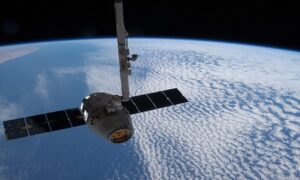Satellites cameras are vital to our understanding of Earth and its ecosystems. As the effects of climate change intensify and become more obvious, satellite technology and Earth observation tools become more and more important. Using a satellite camera in space, researchers can discover things about the planet that would otherwise be impossible. They can collect data on a huge scale, allowing them to uncover climate patterns and ecosystems at work.
The ocean is one of the most contested areas in discussions about the climate crisis. Oceans absorb CO2, but overabsorption can lead to ocean heating. This can lead to a range of problems that may have devastating effects on life on Earth. Using satellite cameras for ocean acidity measurements can help show scientists how much damage is being done to the seas and help them work out how to stop it.
How Does a Satellite Camera Work?
Satellite cameras can be used to provide information and images from space. They can do this by providing data in a variety of ways, from thermal imaging to moisture measurements. Most satellite camera types are essentially remote sensing devices. Their ability to pick up on electromagnetic waves and turn these into images lets scientists do research on a whole new level.
A satellite camera in space can also provide images of space. Satellite camera resolution for this can vary depending on the device. The scale that a satellite camera can achieve, compared with a terrestrial measuring device, allows researchers to view data on a global level and spot patterns taking place worldwide. This is what allows researchers to view weather patterns as they form, map entire continents for GPS, and provide worldwide communications networks.
Satellite cameras are usually mounted on regular satellites and sent into orbit on rockets. As space technology advances, some companies are experimenting with building micro-cameras for small satellites. This cuts back on fuel use and emissions, as smaller satellites require fewer launches to distribute them.
Why Use Satellite Cameras for Ocean’s Acidity Levels?

With the oceans under threat, scientists have begun to wonder how to use the satellite camera to measure ocean acidity. While some satellites are primarily used for imaging, others can be used to measure pollution and chemical levels. New satellite Earth cameras could let scientists measure the amount of Co2 and nitrogen dioxide currently held by the ocean.
What Cameras Do Satellites Use?
Satellites can measure pollution levels using ultraviolet and infrared observation technology. This can potentially allow scientists to gauge just how much carbon is absorbed by our oceans. Failure to curb ocean pollution could have catastrophic effects on our natural world.
Why Is Cleaning Up the Ocean Important for Tackling Climate Change?
Aside from protecting marine life, the oceans serve several important functions in mitigating the effects of climate change. Up until now, oceans have provided an important buffer as the world increases carbon emissions. Oceans absorb Co2, reducing the amount in the atmosphere and preventing further catastrophic heating. Ocean pollution and ocean heating have many negative effects:
Ocean Acidification
Ocean acidification is one of the most severe effects of ocean pollution. Scientists measuring ocean composition with terrestrial technology have already noticed this trend. Acidification means that the ocean’s composition is going from being alkaline to acidic. Scientists can see this by monitoring pH levels in the ocean. This has a drastic effect on marine life, particularly on shellfish and coral.
Coral provides natural ecosystems for many sea creatures. Ocean acidification kills coral, thereby destroying a vast natural habitat. Many types of shellfish and small marine life cannot survive in acidic water. These creatures are the basis of the food chain for larger fish and marine animals, and their demise will lead to mass extinction.
Carbon Build-Up
The ocean is a natural carbon sink and stores excess carbon in the atmosphere. However, the amount of carbon emissions produced by humans has led to ocean overload. If the sea can no longer take in carbon, more carbon will remain in the atmosphere, leading to increased global heating. This could lead to disastrous temperature rises of more than 2 degrees, which scientists already predict in the near future.
Weather Disruption
A satellite camera in space can allow scientists to observe ocean currents that may cause disruptive weather patterns. One example of this is the movement of the Gulf Stream, which has recently begun to slow down, leading researchers to fear the weather impacts of this. Without the Gulf Stream’s warming effect, Europe could experience much colder winters. Advanced satellite technology can help researchers stay abreast of these changes.
Satellite cameras are vital in observing our changing planet. As climate change accelerates, we will need them more than ever to monitor the effects. Advanced space technology ensures that this can happen.



































